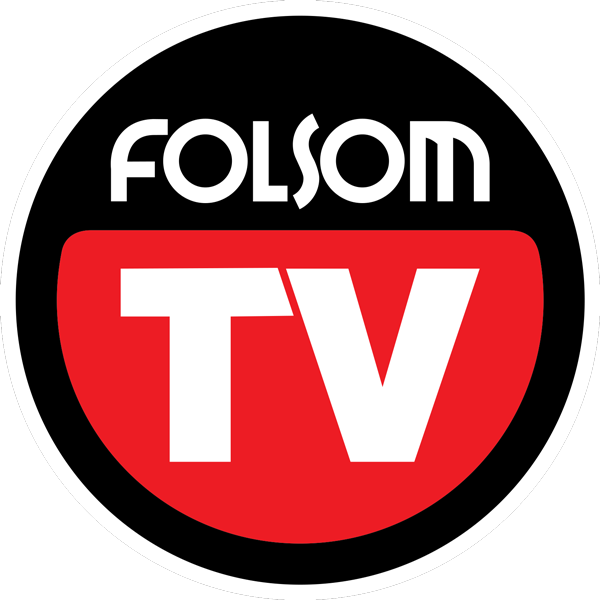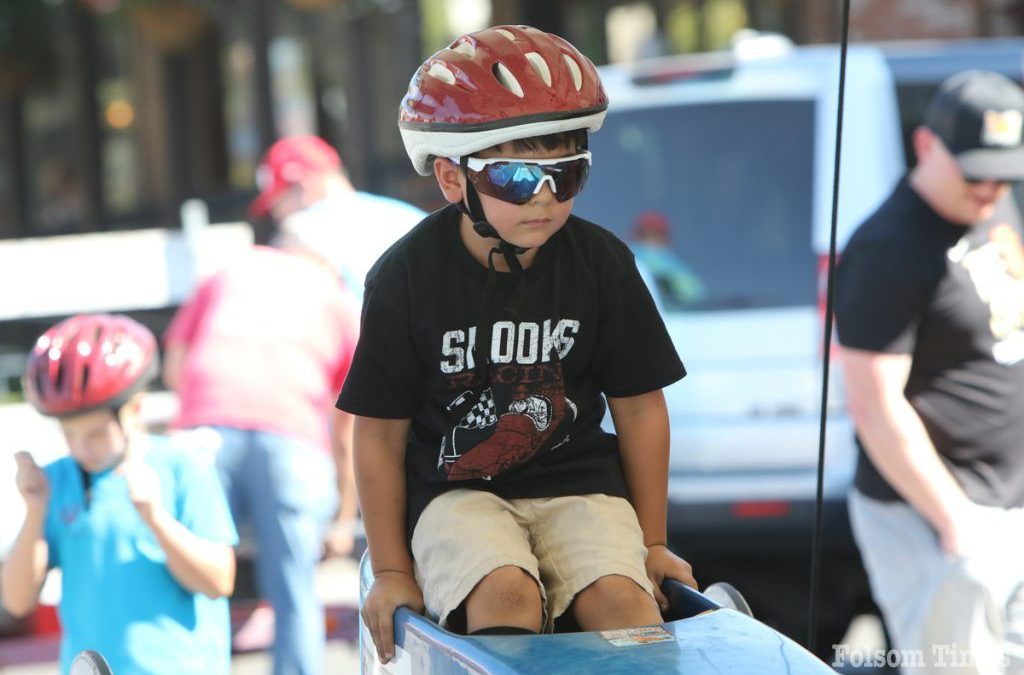The sixth annual Folsom Soap Box Derby roared into Historic Folsom this past weekend with another successful year for what has become a Folsom tradition, welcoming 26 racers and drawing a large crowd of spectators to Sutter Street.
From 7-year-olds to 20-year-olds, participants raced gravity-powered cars down the historic course in what has become a beloved community event since its revival in 2018. Racers came from all over the country, with some hailing from as far away as Washington, Utah, and Los Angeles.
The latest chapter of this fun event ran from Saturday through Sunday, with three competitive divisions—stock, superstock, and masters—offering different levels of racing based on driver experience and car design. Each day, races were held from 10 a.m. to 4 p.m., providing hours of thrilling competition. Volunteers and local businesses played crucial roles in making the event a success, while attendees lined the streets to watch the sleek cars zoom by, cheering on the young drivers.
The 6th Annual Folsom Soap Box Derby attracted 26 competitors this year, some who traveled from far and others who were locals that joined the fun. Folsom Times photos by Bill Sullivan
Folsom’s modern soap box derby has deep roots in the city’s history. The sport originally gained popularity in the 1950s when local races were held on East Natoma Street. The hill, near Folsom Prison and City Hall, was a prime location for early races that became a community tradition. One of the first recorded races in Folsom took place in 1953 during the Pioneer Festival. In that race, David Casten from Orangevale narrowly defeated Folsom’s Elton Ellis, though the exact start of the event remains unclear due to sparse archives. By the 1960s, local competitions were held on the grounds of Aerojet, a major employer in the region at the time. In 1961, these events even served as qualifiers for international competitions, cementing Folsom’s place in the broader soap box racing world.
Soap box derby racing itself has a storied history that dates back to 1933 when Dayton Daily News photographer Myron Scott saw a group of children racing homemade cars down a hill in Dayton, Ohio. Inspired by what he saw, Scott organized the first official soap box derby race, which drew 19 participants. The following year, the first All-American Soap Box Derby was held, and the event quickly grew in popularity. By the 1950s and 1960s, soap box derby racing had become a national sensation, with thousands of spectators gathering each year in Akron, Ohio, to watch local champions compete in the All-American finals. The sport also attracted television and movie stars, adding to its widespread appeal.
Folsom’s return to the soap box derby scene in 2018 marked a continuation of this long-standing tradition. The city’s event now ties into the national Rally World Championship, which was introduced in 1993 to expand opportunities for racers to compete in a grand prix-style circuit. The modern format allows participants from various districts to compete, with the potential to earn a spot in the national championship in Akron.
In addition to the competitive racing, the modern soap box derby format includes opportunities for younger children and allows adults to assist with the construction of the cars. This has helped keep the sport accessible to new generations of racers. Local events like Folsom’s also feature loaner cars, allowing newcomers to participate without the need for a long-term commitment, helping to grow the sport’s local following.
Another key contributor to soap box derby’s resurgence in Northern California is the Silicon Valley Soap Box Derby organization. The group, which began after local children from Palo Alto and Campbell raced in Vallejo in 2006, has been instrumental in bringing the sport back to life in the region. With financial and logistical support from local sponsors and service clubs, the organization was able to establish a racing site on Dana Street in Mountain View. This allowed children to race closer to home, and also reintroduced “Super Kids” racing, a special division for children with disabilities, to California.
However, due to rising costs, the races were relocated to Hanover Street in Palo Alto and later expanded to new sites, including Livermore, San Jose, and Tuolumne during the 2015-16 rally season. In 2019, Folsom and Los Gatos were added as race sites, further increasing the reach of soap box derby in Northern California. The Silicon Valley organization continues to look for new locations, aiming to give more children across the region the opportunity to experience the thrill and camaraderie of soap box derby racing.
The revival of soap box racing in Folsom owes much to the efforts of local residents Karen Holmes and Mike McKernan, who spearheaded the event in 2018. Holmes, a member of the Folsom Historic District Association Board, had long pondered the idea of bringing the derby to Folsom. With McKernan’s help, the duo made the dream a reality by contacting the American Soap Box Derby Association in Akron, Ohio. That initial connection paved the way for Folsom to join the Northern California derby circuit, which includes the Silicon Valley chapter that has embraced Folsom as a staple race site ever since.
Holmes and McKernan’s passion for the sport extends beyond Folsom. The pair have traveled to the World Championships in Akron, where they were thrilled to find that the Folsom race is well-known among racers from across the country. “It’s pretty amazing to see people’s reactions when they realize we are from Folsom,” said Holmes. “They immediately knew about the Folsom race.”
With deep roots in both local and national history, Folsom’s event appears to be thriving judging from this latest turnout, drawing both veteran racers and enthusiastic newcomers to keep the soap box derby tradition alive. Those interested in getting their family members into the sport can learn more by visiting the Silicon Valley All American Soap Box Derby website HERE. https://siliconvalley.soapboxderby.org
<p>The post Historic Folsom Soap Box Derby heats up, literally, with 26 competitors first appeared on Folsom Times.</p>

